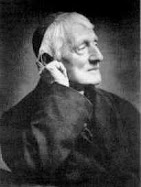
Last Friday (Jan. 22) I participated in my very first
March for Life. Although I have been involved in the pro-life movement for some 25 years, for one reason or another I had not yet made it to
The March. Since I have served since last fall as coordinator of the
Alexandria, VA 40 Days for Life prayer campaign, I was determined to be there this time. I wouldn't have missed it for the world! What a joy to be among hundreds of thousands of people (best estimates put the number at over 300,000), many of whom traveled across the country and spent all night on a bus to stand up for the Culture of Life.
As a rule I am not one to see the glass half full. Those of you who have read C.S. Lewis's
The Chronicles of Narnia may remember the character, Puddleglum, in the book,
The Silver Chair. He was determined to do the right thing even while he was pretty thoroughly convinced that it would all come to nought in the end. During the past couple of decades I have often felt that I understood how Puddleglum felt, at least when it comes to my side of the so-called "culture war." But now even I am inclined to think that perhaps, after all, the pro-life movement really is winning--at least on this particular issue. Why? I can think of at least three reasons.
1. For the first time since the Gallup organization began asking the question in 1995, more than half of American adults
identify themselves as pro-life, and this is a dramatic shift compared to last year, when only 44 percent of Americans called themselves pro-life.
2. The relative youth of the marchers. Several people I talked to at the march took note of the presence of so many young people. This fact was not lost even on Robert McCartney, a pro-choice columnist who covered the event and whose column appeared in next day's
Washington Post. He estimated that about half of the marchers were under the age of 30. (Read the entire article
here):
I was especially struck by the large number of young people among the tens of thousands at the march. It suggests that the battle over abortion will endure for a long time to come.
Indeed. These young people (especially those younger than about 35) are, after all, the "
Roe v.
Wade generation." About a quarter of their cohorts have been lost to abortion in the 37 years since the Supreme Court's tragic decision in 1973 that made abortion on demand the law of the land. This is one of the reasons that the younger generation is generally more pro-life than their parents' and grandparents' generations. The youth rally at the downtown Verizon Center on Friday morning drew so many to the 17,000-seat arena that many had to be turned away.

3. The women of my generation (and ten or twenty years on either side of me), the ones carrying signs proclaiming, "I Regret My Abortion." And the men who carried "I Regret Lost Fatherhood" signs. The
"Silent No More" campaign, which first appeared at the March for Life in 2003, has given these brave people an opportunity to come forward and expose the false notion that abortion is sometimes a "preferable alternative," as someone close to me once put it.
Of course, as events of the past few decades have taught a majority of Americans, this is not true. The destruction of human life is never, in the final analysis, preferable to the preservation of life. The Silent No More campaign participants have paid an enormous price for believing that falsehood, and now they are helping others like them to find the healing that, tragically, the hard-liners in the pro-choice movement still refuse to admit they need. Many of them spoke at the rally in front of the Supreme Court building, and you can see a video montage of their remarks on the
website. I commend it to you.



















